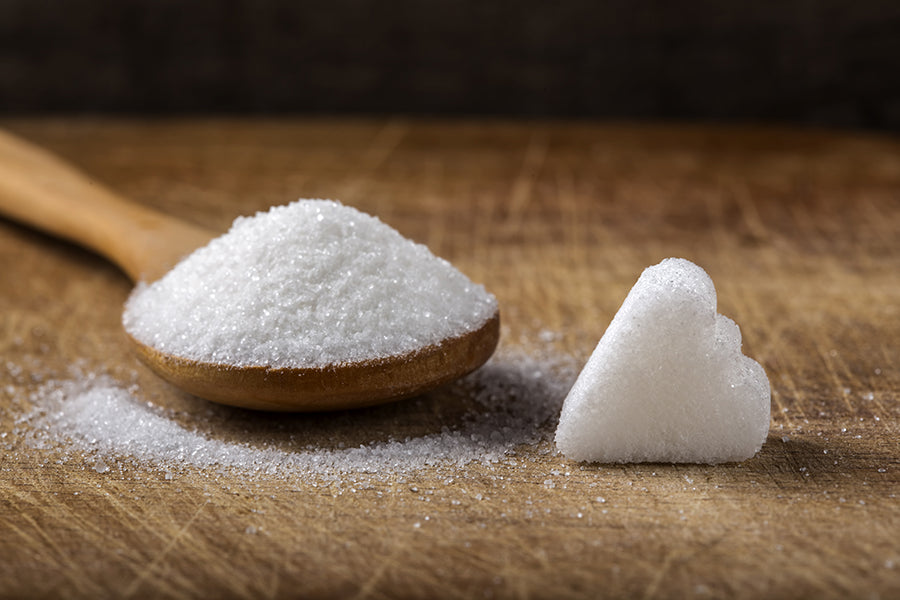
The Future Is Sweet (and Low-Carb): New Sweeteners That Could Revolutionize the Market
In recent years, interest in low-calorie sweeteners with zero or almost zero glycemic index has grown significantly, especially among those who follow a low-carb or ketogenic diet. This evolution is based on the constant search for solutions that are not only healthier, but also more performing from an organoleptic and technological point of view. In this context, a new generation of sweeteners is appearing on the market, some already authorized in several countries, others still awaiting validation by the competent authorities such as the FDA and EFSA. In this article we analyze four of the most promising.
Note on acronyms
- FDA ( Food and Drug Administration ) : is the United States government agency responsible for regulating foods, drugs, and supplements. Its evaluation (known as GRAS , Generally Recognized As Safe) is often the first step in introducing new ingredients to the American market.
- EFSA ( European Food Safety Authority ) : is the independent body of the European Union that evaluates the safety of foods and food additives. To be marketed in Europe, a sweetener must be authorized as a " novel food " or as an additive , based on an EFSA evaluation.
1. Allulose (D-Psicose): Fructose's Virtuous Twin
Allulose is a monosaccharide naturally present in small quantities in some fruits, such as figs and raisins. From a chemical point of view, it is an epimer of fructose, but with much more interesting metabolic characteristics: it contains about 0.2 kcal/g and does not affect blood glucose or insulin levels.
Key aspects:
- It has no laxative effects, unlike other polyols.
- It maintains a flavor very similar to traditional sugar.
- It can be used in cooking and ferments effectively.
Other benefits: Preclinical studies suggest that allulose may improve insulin sensitivity and promote weight loss when included in a balanced diet. It also appears to have a positive impact on liver health by reducing fat accumulation in the liver.
Regulatory Status: In the United States it is considered GRAS (Generally Recognized As Safe) and is not counted among added sugars. In Europe, it has been awaiting authorization as a novel food since 2018.
How much does it cost: The wholesale price varies from about 0.88 to 2.63 euros/kg. At retail, packages of 450-1000 g can reach 26-35 euros. With the expansion of industrial production, costs could further decrease.
2. Keto-Fructose: Fermentation and Innovation
Derived from the fermentation of sugars present in apples and pears, the so-called "keto-fructose" is an emerging sweetener designed to offer a sweetness similar to sucrose, with a reduced caloric intake and a functional profile particularly suitable for industrial production.
Key aspects:
- Caloric intake of approximately 1.5 kcal/g.
- Good solubility and rounded taste, without unpleasant aftertastes.
- It does not promote tooth decay and is neutral with respect to the intestinal microbiota.
Other advantages: Thanks to its stability in acidic solutions and good compatibility with functional ingredients (fibers, proteins, probiotics), this sweetener is a candidate to become an ideal solution for health drinks, energy bars and refrigerated desserts.
Regulatory status: Currently under GRAS evaluation by FDA. No dossier has yet been submitted to EFSA in Europe.
How much does it cost: Since it is not yet on the market, the price is only estimated. It is expected to be between 0.88 and 4.39 euros/kg, in line with other industrial-scale fermented sweeteners.
3. Monk Fruit: Asian Tradition at the Service of Innovation
Native to southern China, monk fruit (Siraitia grosvenorii) is known for its high sweetness due to the presence of mogrosides, compounds up to 250 times sweeter than sugar. Its use in food is well established in Asia and North America.
Key aspects:
- Completely natural.
- It has no impact on blood sugar levels.
- Suitable for cooking, provided it is properly purified.
Other benefits: Unlike other intense sweeteners, monk fruit has a softer, less metallic flavor profile. Additionally, monk fruit has been studied for its potential anti-inflammatory and antioxidant properties.
Regulatory status: In the United States it is authorized and used in various products, often mixed with erythritol. In Europe, however, the ingredient is not yet authorized, as there is no official request to EFSA.
How much does it cost: In wholesale, extracts with 20-50% mogrosides cost between 12.30 and 15.80 euros/kg. High concentration products sold at retail can exceed 800 euros/kg.
4. Brazzein: High-intensity protein sweetness
Brazzein is a natural protein extracted from the fruit of the African plant Pentadiplandra brazzeana Baillon. It has a very high sweetening power (500 to 2000 times that of sugar), with a clean taste and no persistent aftertaste. Furthermore, it is heat stable and can therefore be used in cooking.
Key aspects:
- A minimal amount is enough to obtain a sweetening effect.
- It does not affect blood sugar levels.
- It is colorless, tasteless when isolated, and highly soluble.
Other benefits: As a protein, brazzein could have added value in high-protein and specialty foods. In addition, its structure is highly resistant to thermal denaturation, making it suitable for bakery and pastry products.
Regulatory Status: In advanced stages of GRAS approval in the United States. No approval procedure has yet been initiated in Europe.
How much does it cost: The cost for small batches is high: between 210 and 228 euros/kg. However, with large-scale production, it could drop to 0.88-4.39 euros/kg.
EFSA Updates: The Latest Reassessments
In the meantime, EFSA continues to monitor and re-evaluate sweeteners already on the market, in light of new scientific evidence:
- Acesulfame K (E950): the acceptable daily dose has been increased from 9 to 15 mg/kg body weight.
- Erythritol (E968): safety of use confirmed in 2023, although attention should be paid to laxative effects in case of high consumption.
- Sucralose (E955): Under review. Some recent studies have raised questions about long-term safety.
- Stevia (E960): overall safety remains confirmed , but EFSA has requested new data on residual glycols.
- Saccharin (E954): confirmed as safe , with ADI revised to 9 mg/kg body weight per day.
FDA vs EFSA – Two Different Approaches, Common Goal
As our “taste” of the sweet future proceeds with allulose, keto-fructose, monk fruit and brazzein, it is essential to understand how the regulatory pathways and controls of the FDA (US) and EFSA (EU) differ .
🔹 Structure and processes
-
FDA : combines risk assessment and risk management in the same agency.
- It has two main tools: the formal Food Additive approval process, which requires the submission of a petition and a full data analysis, and the GRAS system, in which operators often declare that an ingredient is “generally recognized as safe” . This approach can lead to greater speed to market for companies, but also raises questions about conflicts of interest and transparency .
- EFSA + EU Commission : bipartite regulation, with clear separation between scientific evaluation (EFSA) and regulatory decisions (Commission/Parliament).
-
- EFSA carries out rigorous scientific risk assessments , publicly analysing data on safety, toxicology, exposure, vulnerable groups .
- The Commission complements this assessment with principles such as precaution and socio-economic impacts, before authorising or not a product.
🔍 Security and transparency
- In Europe, the pre-market procedure is more cautious and slow , because it requires complete dossiers such as “novel food” and manages scientific uncertainties with rigor.
- In the United States, under the GRAS system, some ingredients can reach the market before receiving formal approval, accelerating innovation but requiring potentially less rigorous oversight .
✅ Who protects consumers best?
- FDA : Aims to balance safety and innovation, but centralized management and the GRAS system may make the process less transparent.
- EFSA : with its scientific independence, transparency and separation of evaluation and management, it generally offers a more rigorous approach. However, responding to emergencies is slower, due to multiple steps and public analyses.
In summary, FDA and EFSA share the same goal — ensuring food safety — but they take two different paths:
- one, the American one, more reactive and market-oriented ,
- the other European one, based on a precautionary and transparent approach, which prefers to wait for solid data before authorising new ingredients.
In conclusion, the low-calorie sweetener sector is in a phase of rapid evolution . New promising molecules are appearing on the market, while regulators are constantly updating the assessments of compounds already in use. It remains to be seen which innovations will actually make it into European food production, and when.
